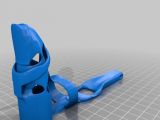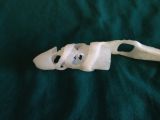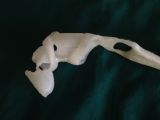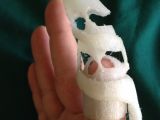There are many ways that one might lose their fingers, whether through accidents or illnesses or whatever else. There's not much that can be done for those who lose them completely, but partial finger amputations do provide one possibility: partial finger prosthetics.
In this field, it's actually harder to make smaller mechanical parts than it is to make prosthetic legs. It all boils down to less space to include moving parts.
Because of that, prosthetic fingers sell even less than prosthetic hands and feet, or full limbs. There just isn't much appeal in paying tens of thousands of dollars or euro for something you can make do without.
Now, though, you don't have to pay so much anymore, and you can even get a hold of something that is much better than conventional prosthetic solutions anyway.
The origami partial finger prosthetic
This is another case of 3D printing technology bringing costs down to a thousandth of the normal price, all the while improving functionality. A man by the name of Sean Blaine designed the new prosthetic and gave it the name of Origami Finger.
He simply couldn't afford a partial finger prosthetic, so he set about making his own, drawing on his experience as realtor to pull it off.
He put around 200 hours into the design phase of the project, and then spent another 400 printing prototype after prototype, until he was satisfied with the result.
Between that project, his normal job and meeting the regular needs of a human being (eating, sleeping, socializing), it took him around thirteen months to finish everything.
The final product is a flexible but sturdy partial prosthetic that can bend just right and unbend when you relax your hand. The prosthetic finger is made from white nylon and is composed of tubes and cones plus a number of flexible nodes (living hinges).
The key was making everything into a single part instead of printing a whole bunch of sections that would have to be assembled later.
The model can be downloaded at any time
The 3D model for the Origami Finger on Thingiverse has everything you need. You can choose to make a flexible version like the one Blaine preferred, or you can engineer it to remain stiff by means of an ordered structure (a cylinder or cone). You'll have to make sure the living hinges allow the finger to bend though, so it will need a thickness of 0.5 to 1 mm and a strength of 50 – 100 lbs / 22 – 45 kg.
Blaine's next project is for an Origami Thumb, which is good because lacking a thumb is a lot more disastrous than lacking the other fingers.
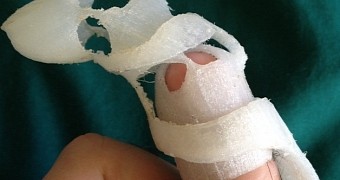
 14 DAY TRIAL //
14 DAY TRIAL // 
